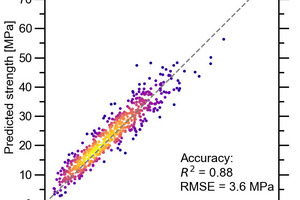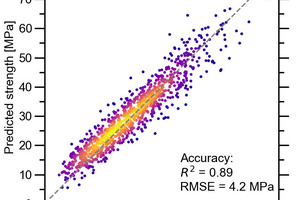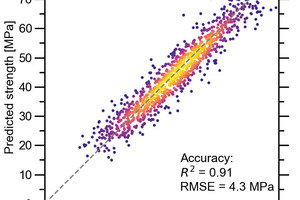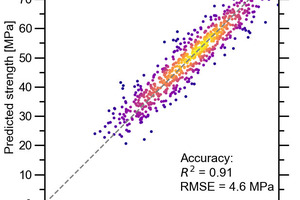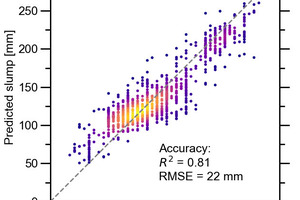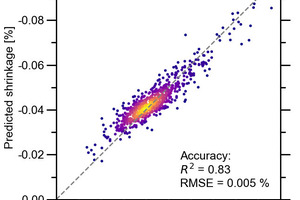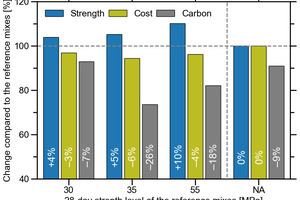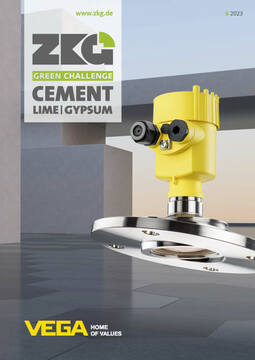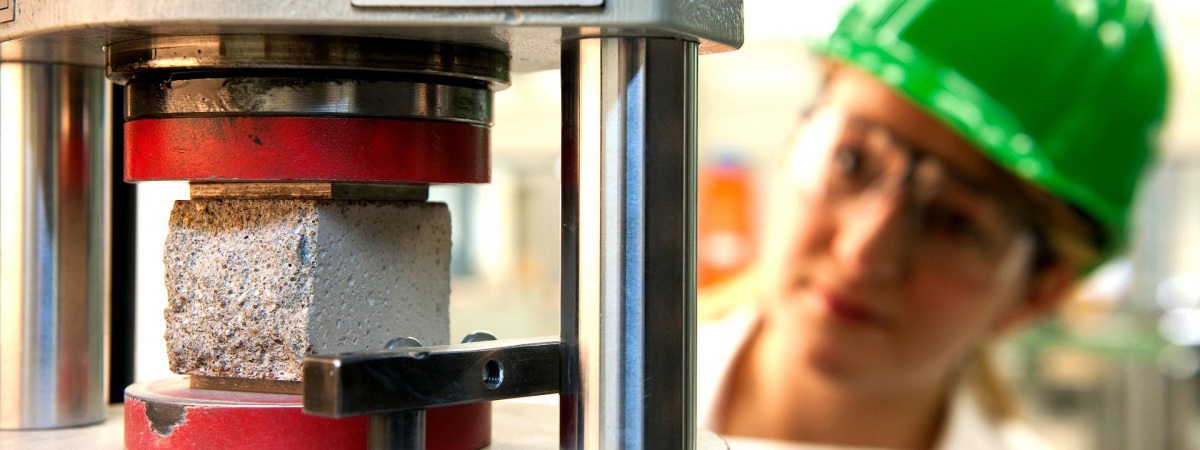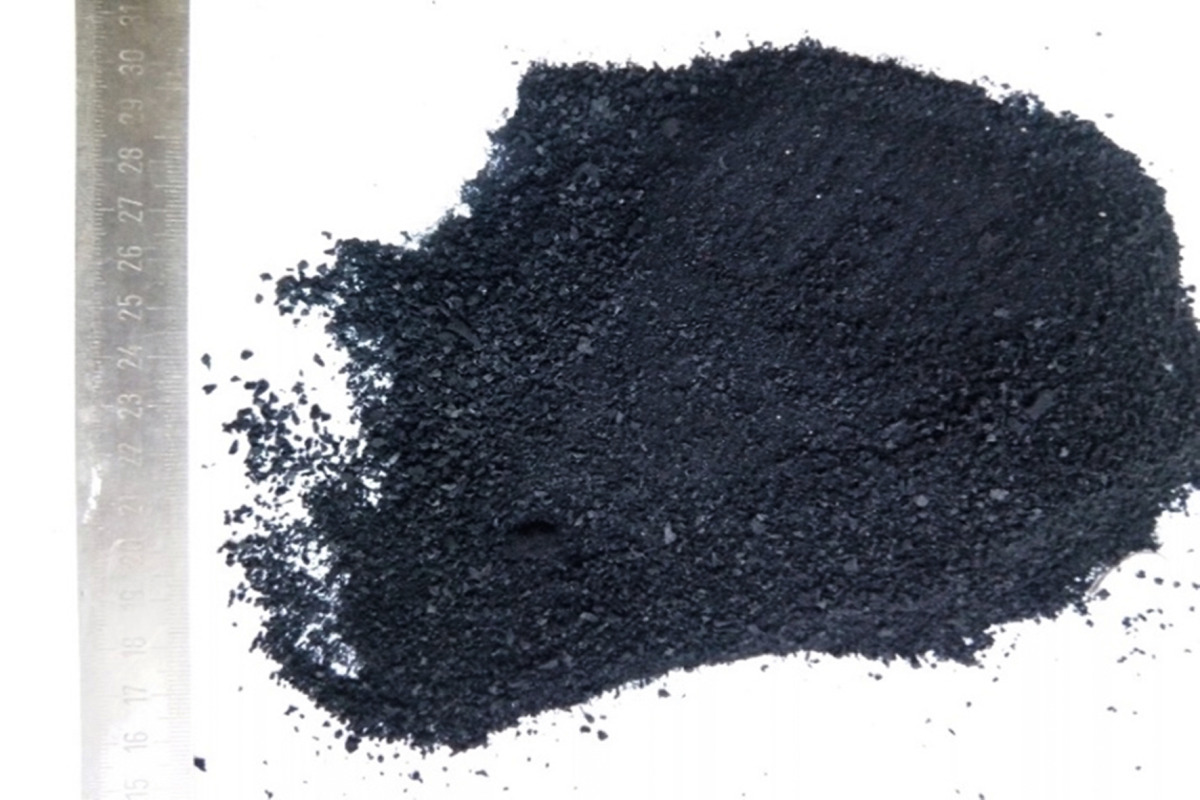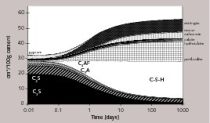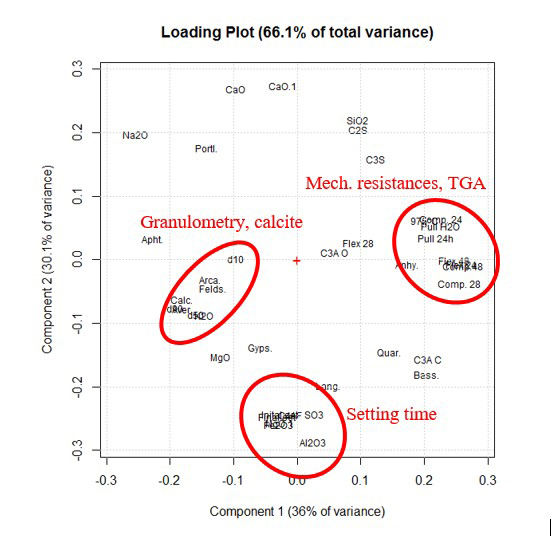Concrete.ai: Generative Artificial Intelligence helps designing low-carbon ready-mix concrete
For decades, the process of designing the mixing proportions for concrete mixtures has been largely empirical and inefficient, due to the complexity of the various internal and external variables at play. This lack of efficiency in concrete mixture design has made it difficult to develop new formulas that meet the pressing need for decarbonization in concrete production. Concrete.ai is an artificial intelligence (AI), specifically, machine learning (ML) platform that uses innovative data analytics to revolutionize the design of ready-mix concrete. Recent projects by Concrete.ai have shown that concrete formulas designed using Generative AI can achieve significant reductions in both material cost and carbon dioxide equivalent emissions.
1 Introduction
Nowadays, concrete is the most produced engineering material that plays an irreplaceable role in modern construction, with an annual production estimated at 35 billion t. Indeed, concrete consumption is expected to achieve a compound annual growth rate of more than 5% in the next decades. However, a major drawback associated with the use of concrete lies in the fact that cement, the essential constituent material in concrete, accounts for around 7% of global CO2 emissions [1]. Nevertheless, this means that even a small reduction in the CO2 emissions from concrete production is meaningful toward the UN’s goal of carbon neutrality by 2050 [2]. As such, developing low-carbon concrete materials is one of the most effective initiatives that can be taken to reduce carbon footprints in the construction industry.
Although concrete science and technology have advanced greatly over the past decades, only in recent years has increasingly more attention been focused on reducing the carbon embodied in concrete. Currently, various approaches have been sought for decarbonizing concrete, among all, optimizing concrete mix design is arguably the most practical and impactful path. For many years, researchers have been working to develop models that can predict the performance of different concrete designs, particularly their compressive strength [3-6]. While those efforts have had varying levels of success in building physics/chemistry-based models, the high number of variables involved in a concrete mix design and practical constraints make it challenging to scale this knowledge to real-world production applications [7, 8]. Ideally, what is needed is a model that is able to predict the performance of a diverse set of concrete mixtures and optimize their various performances, such as strength, constructability, durability, and material cost, along with the carbon footprint of concrete.
Recent advances in artificial intelligence (AI) and machine learning (ML) offer exciting possibilities for predicting the performance of concrete mix designs at higher accuracies, and, therefore, fulfilling much more efficient design optimization. AI models are particularly adept at finding patterns between input features (such as raw material proportions) and output targets (such as concrete properties). A well-trained AI model can make accurate predictions based on all the complex factors provided to the model, which cannot be easily handled by either empirical experience or knowledge-based models. In recent years, the success of predictive AI has been frequently demonstrated in high-tech fields such as autonomous driving and social media trend forecasting. Regarding the application of AI in concrete research, the use of various ML methods has also merged on the table, where a number of studies have investigated applying different techniques to predict the strength [9,10,5,6, 11-14], durability [15-16], and other material qualities of cementitious materials [19-21]. At the moment, many concrete producers have accumulated huge amounts of production data that can be used to train robust AI models for their particular cases; however, the benefits of AI are still out of reach for the majority of manufacturers. This is due to a series of reasons, which include but are not limited to the knowledge gap across the fields, lack of experience and confidence working with ML models, and the concern about the high cost of building an AI system from scratch. Nevertheless, the potential of applying AI technologies in the concrete industry is vast, and mankind is only just beginning to scratch the surface of what is possible.
Herein, a professionally-customized and ready-to-use AI platform, Concrete.ai [22], was presented to help concrete producers reduce raw material costs and achieve significant carbon savings through Generative AI-optimized mix design. Concrete.ai focuses on 1) unlocking the information embedded in the historical production data that are exclusively owned by individual producers, and 2) transforming this invaluable and unique asset into predictive ML models to optimize their future predictions. As many of the AI-extracted data patterns are too complex to analyze, the information provided by AI usually far exceeds that which can be captured by human experts. Concrete.ai’s models enable concrete producers to make more informed and insightful decisions about a series of effects ranging from raw materials selection to production processes. In particular, Concrete.ai is able to identify inefficiencies and optimize production in real time, with no hardware upgrades or changes in raw materials. By continuously monitoring production data and making adjustments as needed, Concrete.ai can help concrete producers reduce waste, lower both costs and carbon emissions, and increase profits. Additionally, Concrete.ai can help improve product quality by identifying potential issues before they become problems, leading to fewer defects and customer complaints.
2 Methods
Concrete.ai’s ML models are built based on a meticulous, thorough, and exhaustive curation of the raw data provided by concrete producers. During this process, a series of in-house AI techniques are implemented to remove the outliers, normalize the different concrete formulations, and transfer them into machine-readable data to enable training producer-specific models. The curation dataset can incorporate a large variety of design factors that influence concrete performance. Typical first-order factors include but are not limited to dosages of water, cement, supplementary cementitious materials (SCMs, such as different types of fly ash, slag, silica fume, natural pozzolans, etc.), aggregate materials, chemical admixtures (e.g., different types of water reducers, air entrainer, accelerator, retarder, viscosity-modifying admixture, and shrinkage-reducing admixture. The key properties of the above raw materials such as cement type, key aggregate attributes, and the characteristics of SCMs are further considered. In addition, a list of secondary factors that are often omitted yet potentially influential can be also included in the curated datasets, such as air temperature, concrete plant type, and inconsistency of the raw materials.
Based on those design factors, Concrete.ai trains ML models to predict a number of key concrete properties, for example, the development of compressive strength starting from 1 to 90 days, slump, air content, and shrinkage. In addition to offering accurate predictions to target concrete properties, given a set of desired properties or performance targets for each concrete design (e.g., strength, constructability, durability, and material constraints), the trained ML models can be inversely used to optimize the mix design by suggesting the combination of input factors that will result in the desired outcomes. This process, known as inverse concrete mix design, involves using ML models to search for the optimal mix design that meets the desired targets while minimizing the costs (e.g., material cost or carbon footprint) of the concrete. By leveraging the predictive power of ML models, the Generative AI platform is able to quickly and accurately find optimal concrete mix designs that simultaneously meet the needs of cost reduction and carbon saving.
3 Results
3.1 Prediction accuracy of the ML models
Next, the effectiveness of the ML models using a large dataset of real production data is shown. More than 1000 unique concrete mixes are used here, and they broadly cover a large variety of concrete materials, such as normal concrete, high-performance concrete, controlled self-consolidating concrete, controlled low-strength materials, roller-compacted concrete, as well as concrete mixtures with rapid-set, low-shrinkage, and pervious properties. The ML models are used to predict 1) the concrete strength at four ages (3, 7, 28, 56 days), 2) initial slump, and 3) 28-day drying shrinkage. Comparisons between the model predictions and the lab measurements for those properties are collectively shown in Figure 1. Note that the lab measurements vary across the different properties, so the number of data points in Figure 1 is not consistent across the individual cases. In Figure 1, the model accuracy of each prediction is displayed, as quantified by two statistical metrics – coefficient of determination (R2) and root mean square error (RMSE).
Based on the results in Figure 1, it can be seen that the ML model achieves impressive accuracy in predicting the strength, slump, and shrinkage of the various concrete mixtures, especially considering the inherent variability in the measurements and the broad range of concrete types. It can be observed that, over all the individual plots, the data points are evenly distributed along the line of equality and do not contain significant outliers. This suggests that the models do not exhibit an obvious tendency to consistently overestimate or underestimate the target property. In terms of the strength predictions from Figures 1a to 1d, their RMSE values are all around 4 MPa – this is a rather exciting observation as this prediction error is already close to the standard deviation of the concrete strength measurement (e.g., ~4 MPa vari-ation commonly reported for 30-MPa concrete) [23]. Similarly, the models also exhibit fairly high accuracies for predicting slump and shrinkage. For instance, the RMSE of the slump prediction (22 mm, see Figure 1e) is comparable to the acceptable difference between two slump measurements according to the ASTM C143 test standard (e.g., 26mm for concrete with a slump of 125 mm, based on single-operator precision) [24]. Regarding the shrinkage prediction (see Figure 1f), the RMSE is merely 0.005%. This value is also similar to the standard deviation specified by the ASTM C157 test standard [25], which is approximately 0.0045% variation for measuring concrete specimens cured in water. While there is certainly room for further improvements in the ML models, the above comparisons all imply that the model accuracy is approaching the limit that is related to the intrinsic variation of the different property measurements. The ML models seem to have outperformed alternative AI predictions, and have set a new precedent of ML-based concrete performance prediction in terms of both the scale and scope.
3.2 Generative AI optimization for reducing the cost and carbon in concrete mixtures
To further demonstrate the effectiveness of the concrete mix design optimization offered by Concrete.ai’s ML models, the concrete design optimization offered by AI is showcased for three benchmark concrete formulas at different strength levels between 30 to 55 Mpa, as shown in Figure 2. All three benchmark formulas were designed and developed by experienced technicians. For each case, the relative changes of the optimized mix in 28-day strength, raw material cost, and carbon embodiment relative to the benchmark are presented. For optimizing each benchmark design, the AI platform searches for the concrete design that yields a slightly higher strength, yet the lowest cost and carbon is set. Note that the strength results of three optimizations were obtained from lab measurements conducted on both the benchmark and optimized concrete mixtures. As a side reference, the fourth case was further added in Figure 2 to represent the effect of an alternative way for reducing the concrete carbon embodiment based on carbon sequestration. In this case, its 9% carbon saving is assumed based on the data from literature [56-58]; further, due to lack of data, an assumption that this technique has no impact on both concrete strength and the material cost.
As shown in Figure 2, the AI-optimized formulas consistently exhibited higher strength, lower material cost, and significantly lower embodied carbon than expert-developed concrete formulas. In addition, the AI-enabled carbon reduction may be even greater than that brought by the carbon sequestration technique – considering the additional cost required for implementing carbon sequestration (e.g., the storage and transportation of CO2, and equipment installation), carbon reduction via AI optimization may be indeed more attractive. Overall, these results demonstrate the clear advantage of using AI to discover optimal low-carbon concrete formulas and that AI optimization can outperform the mix design optimized by a human expert in simultaneously meeting multiple critical design objectives.
100975

